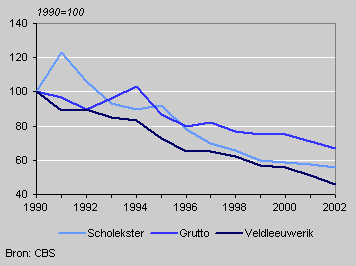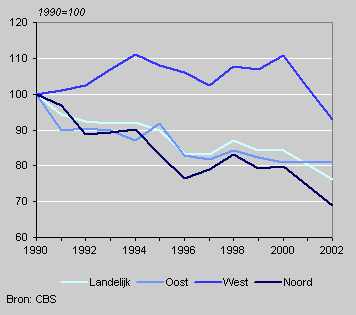Meadow bird numbers continue to decline

Meadow bird populations in the Netherlands have been declining since 1990. The number of black-tailed godwits was 30 percent down in 2002 on the number in 1990. The number of oyster catchers nearly halved in the same period and the number of skylarks more than halved. Species that have increased in number are tufted duck and redshank.
Oyster catcher, black-tailed godwit and lark

Strong decrease in north and east
The decline in numbers of meadow birds was strongest in the North and East of the country. Meadow birds have remained quite stable in the west, although there has been a decline in recent years.
The strong decrease since 2000 is mainly the consequence of the reduction in the number of skylarks, meadow pipits, and blue-headed wagtails. In the north and west of the country numbers of these species were 23 and 33 percent lower than in 2000.
Meadow bird numbers by region

Further intensification and predators
In addition to the reduction in suitable nesting sites, the progressive intensification of farming methods is an important reason for the decline of meadow bird numbers. More intensive land use results in fewer suitable nesting sites, destruction of nests by livestock and a higher mortality among chicks because of mowing.
There is also another possible reason for the decrease in meadow birds: eggs can also fall prey to predators.
Protective measures
Measures have been introduced to protect certain species in recent years: changes in mowing procedures, the institution of reserves and use of nest guards. These measures have not been able to halt the decrease in the number of meadow birds however, according to the national meadow bird monitoring scheme.
Leo Soldaat